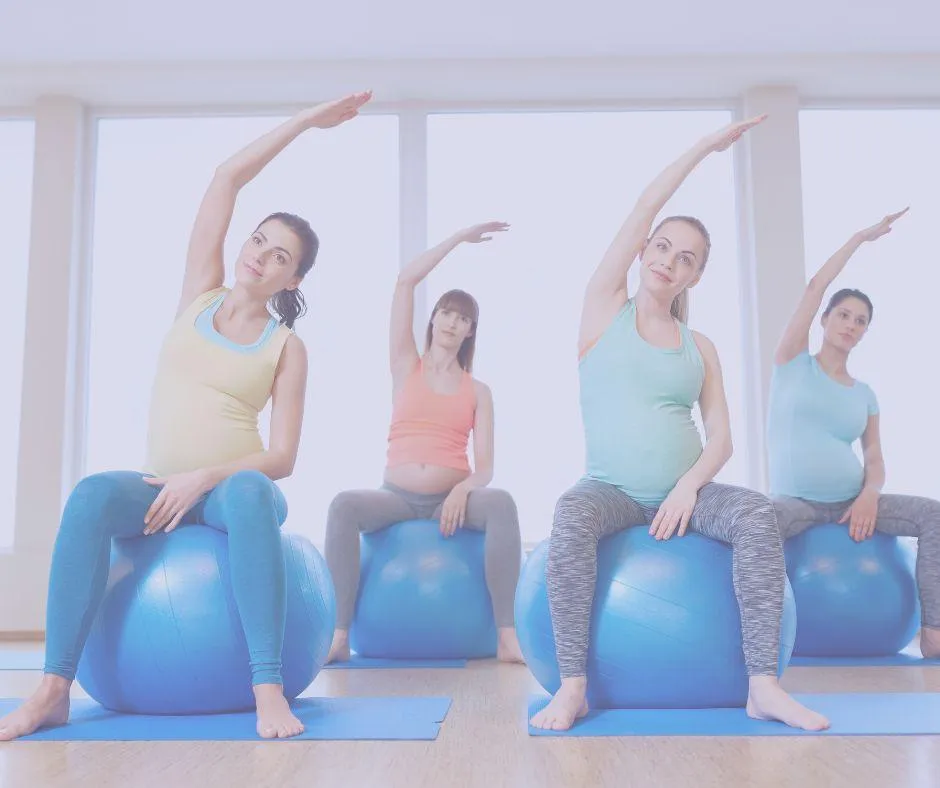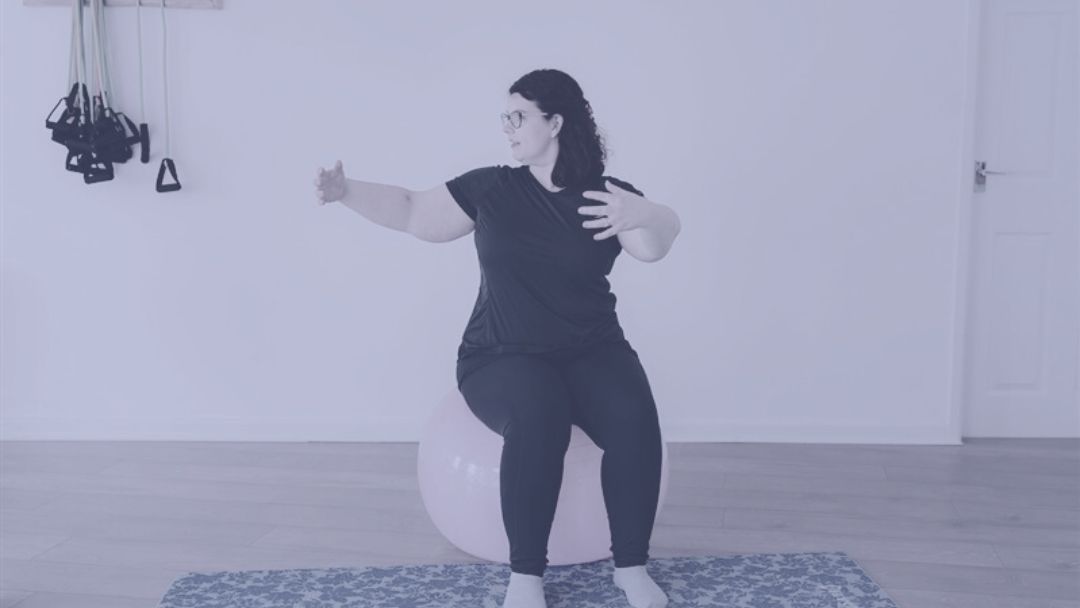BLOG
Step into Your Power. Learn, Transform, Thrive in Life Transitions. Embrace Your Best Self.

Exercising safely in pregnancy
Introduction:
When pregnant, sometimes it seems easier to sit on the sofa eating cake than to get up and do some exercise. You might think that you will put on weight, so you might as well stop exercising and eat everything you have avoided in the past (or was that just me!).
However, exercise has many benefits in pregnancy, not only for you but also for your baby. It is recommended to do at least 150 minutes of moderate exercise a week. You need to ensure that the exercise is suitable and safe to do.
This article contains general advice about exercising in pregnancy but may not be suitable for everyone and does not replace individualised medical treatment. Please consult your healthcare provider before starting any new exercise program.

Let’s look at the benefits of exercise in pregnancy
Improved Cardiovascular Health
Regular exercise helps to keep our hearts and lungs healthy. It also helps improve circulation and maintain healthy blood pressure. This is particularly important in pregnancy to reduce the risk of high blood pressure, which could lead to preeclampsia and other conditions such as a stroke.
Reduced Risk of DVT
A DVT (deep vein thrombosis) is a blood clot that forms in a vein, and pregnancy increases your risk of developing one. It is common in the calf but can also occur in the groin, arm, or any deep vein. Improving circulation, maintaining a healthy weight, and getting your muscles pumping when exercising all helps to reduce the risk of getting a DVT.
Managing Pregnancy Discomforts
Exercising regularly can help reduce aches and pains such as back pain, pelvic pain, and issues such as constipation and swelling.
Improved Mental Health
When we exercise, endorphins (our feel-good hormones) are released. This helps to improve our mood and reduces stress, anxiety, and depression, which are all common during and after pregnancy.
Improved Sleep
Regular exercise helps to improve sleep patterns and reduce insomnia, which is common in pregnancy. Sleep may also be affected by pain or anxiety, and exercise can also improve these.
Improving Stamina for Labour
As you exercise, you are building and maintaining strength and stamina. This will benefit you during labour, as it can sometimes be a lengthy process. The fitter you are, the more strength you will be able to summon when it comes to pushing out the baby.
How to safely Exercise
You may see images of weightlifters or marathon runners competing at 8 months pregnant. This isn’t usually advisable in pregnancy, but if you have been training in a particular exercise such as running or going to the gym before getting pregnant, it may be safe to continue under supervision and with adaptation. Generally, however, if you are starting a new exercise program, it is better to do low impact and gentle exercise.
Exercises to Avoid
High-impact activities with a high risk of falling or impact: such as contact sports, gymnastics, skiing, and intense racquet sports.
Any activity with a risk of abdominal trauma: such as horse-riding, off-road cycling, and trampolining.
Heavy weightlifting: Although light to moderate weightlifting may be safe for most women, heavy weights should generally be avoided. Lifting too heavy increases the risk of strain on the back and pelvis and could cause or worsen pelvic organ prolapse, especially if done with incorrect technique.
Exercise in extreme heat: It is not safe for the baby to increase your core temperature. Therefore, avoid exercise such as hot yoga or hot Pilates or exercising in hot tubs or saunas.
Exercises on the front or back: Once your bump starts to form, you should avoid lying on your front. After 15 weeks, you should also avoid exercises that require you to lie flat on your back. This is due to the baby squashing your major blood vessels in that position.
Tips on Exercising Safely
Antenatal specific exercise
Choosing a low-impact pregnancy-specific class such as antenatal yoga or Pilates helps to safely strengthen your core. These classes should be led by an antenatal trained instructor and should be able to adapt if you have any pregnancy-related pain.

Low-impact exercise
Walking, swimming, static bike, and antenatal yoga/Pilates are great for cardiovascular health without stressing joints.
Pelvic floor exercises
It is important to include pelvic floor exercises in your routine. These help to reduce incontinence, prolapses, and support the back and pelvis.
Stay hydrated
Ensure you are staying hydrated to maintain good circulation, prevent overheating, and support recovery.
Seek support
If you are unsure about how to exercise safely or if you are struggling with pain or pelvic floor dysfunction, then seek help from a health care professional such as myself to support you.
It is important to remain healthy in pregnancy, and the benefits of exercising for you and your baby are clear to see. If you are unsure of where or how to start, then book in with a women’s health physiotherapist or another health professional to help guide you through your pregnancy.
You can book in with me either virtually or in person here if you need more help and support through your pregnancy and beyond.

Sign up for our newsletter.
BLOG
Step into Your Power.
Learn, Transform, Thrive in Life Transitions.
Embrace Your Best Self.

Exercising safely in pregnancy
Introduction:
When pregnant, sometimes it seems easier to sit on the sofa eating cake than to get up and do some exercise. You might think that you will put on weight, so you might as well stop exercising and eat everything you have avoided in the past (or was that just me!).
However, exercise has many benefits in pregnancy, not only for you but also for your baby. It is recommended to do at least 150 minutes of moderate exercise a week. You need to ensure that the exercise is suitable and safe to do.
This article contains general advice about exercising in pregnancy but may not be suitable for everyone and does not replace individualised medical treatment. Please consult your healthcare provider before starting any new exercise program.

Let’s look at the benefits of exercise in pregnancy
Improved Cardiovascular Health
Regular exercise helps to keep our hearts and lungs healthy. It also helps improve circulation and maintain healthy blood pressure. This is particularly important in pregnancy to reduce the risk of high blood pressure, which could lead to preeclampsia and other conditions such as a stroke.
Reduced Risk of DVT
A DVT (deep vein thrombosis) is a blood clot that forms in a vein, and pregnancy increases your risk of developing one. It is common in the calf but can also occur in the groin, arm, or any deep vein. Improving circulation, maintaining a healthy weight, and getting your muscles pumping when exercising all helps to reduce the risk of getting a DVT.
Managing Pregnancy Discomforts
Exercising regularly can help reduce aches and pains such as back pain, pelvic pain, and issues such as constipation and swelling.
Improved Mental Health
When we exercise, endorphins (our feel-good hormones) are released. This helps to improve our mood and reduces stress, anxiety, and depression, which are all common during and after pregnancy.
Improved Sleep
Regular exercise helps to improve sleep patterns and reduce insomnia, which is common in pregnancy. Sleep may also be affected by pain or anxiety, and exercise can also improve these.
Improving Stamina for Labour
As you exercise, you are building and maintaining strength and stamina. This will benefit you during labour, as it can sometimes be a lengthy process. The fitter you are, the more strength you will be able to summon when it comes to pushing out the baby.
How to safely Exercise
You may see images of weightlifters or marathon runners competing at 8 months pregnant. This isn’t usually advisable in pregnancy, but if you have been training in a particular exercise such as running or going to the gym before getting pregnant, it may be safe to continue under supervision and with adaptation. Generally, however, if you are starting a new exercise program, it is better to do low impact and gentle exercise.
Exercises to Avoid
High-impact activities with a high risk of falling or impact: such as contact sports, gymnastics, skiing, and intense racquet sports.
Any activity with a risk of abdominal trauma: such as horse-riding, off-road cycling, and trampolining.
Heavy weightlifting: Although light to moderate weightlifting may be safe for most women, heavy weights should generally be avoided. Lifting too heavy increases the risk of strain on the back and pelvis and could cause or worsen pelvic organ prolapse, especially if done with incorrect technique.
Exercise in extreme heat: It is not safe for the baby to increase your core temperature. Therefore, avoid exercise such as hot yoga or hot Pilates or exercising in hot tubs or saunas.
Exercises on the front or back: Once your bump starts to form, you should avoid lying on your front. After 15 weeks, you should also avoid exercises that require you to lie flat on your back. This is due to the baby squashing your major blood vessels in that position.
Tips on Exercising Safely
Antenatal specific exercise
Choosing a low-impact pregnancy-specific class such as antenatal yoga or Pilates helps to safely strengthen your core. These classes should be led by an antenatal trained instructor and should be able to adapt if you have any pregnancy-related pain.

Low-impact exercise
Walking, swimming, static bike, and antenatal yoga/Pilates are great for cardiovascular health without stressing joints.
Pelvic floor exercises
It is important to include pelvic floor exercises in your routine. These help to reduce incontinence, prolapses, and support the back and pelvis.
Stay hydrated
Ensure you are staying hydrated to maintain good circulation, prevent overheating, and support recovery.
Seek support
If you are unsure about how to exercise safely or if you are struggling with pain or pelvic floor dysfunction, then seek help from a health care professional such as myself to support you.
It is important to remain healthy in pregnancy, and the benefits of exercising for you and your baby are clear to see. If you are unsure of where or how to start, then book in with a women’s health physiotherapist or another health professional to help guide you through your pregnancy.
You can book in with me either virtually or in person here if you need more help and support through your pregnancy and beyond.

Sign up for our newsletter.




